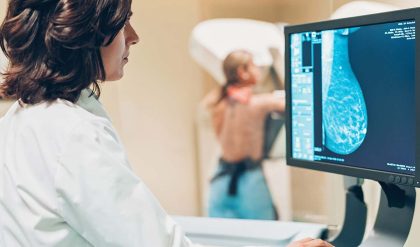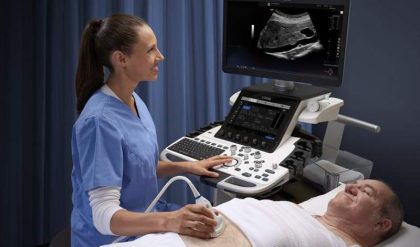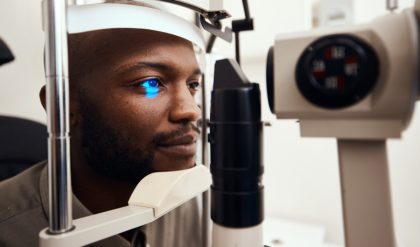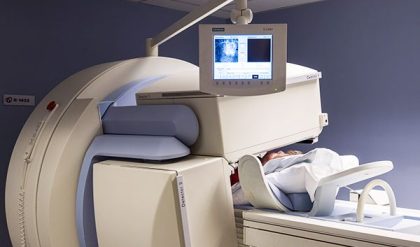
How a robot could be your next surgeon
Robotic surgery are types of minimally invasive surgical procedures that allow doctors to perform complex operations with greater precision and control compared to conventional techniques. Artificial Intelligence and Cybernetics are misinterpreted concepts. However, they differ in many ways. For example, the ideas of Artificial Intelligence is to make computers smart compared to Cybernetics which is to understand and build systems that can achieve goals. Therefore, smart computers versus goal-directed systems have developed concepts applicable to robots.
These robotic technology platforms allow for creative interaction between humans and machines. This process called cybernetics will deliver innovation through efficient, sustainable and cost-effective products, services and work environments.
Consequently, the robotics and automation revolution is transforming industries such as manufacturing, agriculture, healthcare and transport. For example, just imagine going into hospital for cardiac surgery done by robotics with no human intervention. In most cases, robotic operations are carried out using the da Vinci Surgical System. However, this is no longer regarded as current news within the healthcare sector.
This is in comparison to robots which are driven by Artificial Intelligence networks with the advancement of nanorobotic surgery which will produce blockbuster medical devices in the robotics market and definitely make the news! For example, in 2017, a Chinese robot called Xiao Yi, developed by Tsinghua University had passed China’s National Medical Licensing Examination. The robot scored 456 points in the test which was well above the pass mark of 360.
The robot’s ability to automatically capture and analyse patient information was able to formulate an initial diagnosis. However, the question as to whether the robot will replace human doctors possibly in the future; at present, the aim is to help improve efficiency. Xiao Yi is part of China’s effort to make Artificial Intelligence central to healthcare and fundamental to the national plan to build a 1 trillion-yuan AI-based industry by 2030.
The word ‘robot’ was first coined by the Czech writer Karl Capek for his 1920 science fiction play R.U.R (Rossum’s Universal Robots). However, Karl Capek did not invent the word robot although his brother the cubist painter Josef Capek suggested using the word ‘robot’. Also, the robotic theme was presented by Isaac Asimov in his 1941 story Liar and Runaround.
Runaround was first published in the March 1942 issue of Astounding Science Fiction and appeared in the following works: I, Robot (1950), The Complete Robot (1982), and Robot Visions (1990). Runaround featured Isaac Asimov’s – The Three Laws of Robotics:
1. A robot may not injure a human being or – through inaction – allow a human being to come to harm.
2. A robot must obey orders given it by human beings except where such orders would conflict with the First Law.
3. A robot must protect its own existence as long as such protection does not conflict with the First or Second Law.
The economic benefits of robots are enormous especially in the reduction of waiting lists for patients undergoing operations. The opinion is that robotic surgery is safer than open surgery. Also, the hospital stay is shorter and therefore the potential risk of infection is reduced. Another benefit of and robotic operations is that it limits blood loss and therefore there is a reduction in transfusions and also faster patient recovery.
These robots can work without rest and evaluate the disease state of patients more effectively than their human counterparts. Wireless medical imaging data can be transferred to the robotic doctor to generate a potential diagnosis for the patient. These robotic surgeons are also able to perform various minimally invasive procedures.
Today, robotic surgery is not entirely automated and consist of miniaturised surgical instruments mounted on the robotic arm which is operated by surgeons. The surgeons control these instruments remotely by using cameras located in the operating room.
Robotic surgery statistics released by iData Research demonstrates that over 693,000 robotic-assisted procedures were performed in 2017 in the United States.
These precision technologies have boosted the surgical robotics market and are expected to reach $98.7 billion by the end of 2024. The most used robotic system is da Vinci Surgical System and since 2000 has been used in more than 1.5 million surgeries.
The overall market for 2017 for robotic surgical systems was valued at over $2.4 billion.
The total market value includes robotic surgery equipment for spinal surgery, neurosurgery, minimally invasive surgery MIS (laparoscopy, gynaecological, urological, digestive tract, colorectal and cardiac surgeries), radiosurgery, catheter and orthopaedic robotic-assisted systems.
The idea of using remote surgery can be traced back to the 1970s when NASA was experimenting with the concept by applying it to astronauts in orbit. The premise was that a surgical machine located on a space station could be operated by a surgeon on Earth. Other programmes included DARPA (Defence Advanced Research Projects Agency) which was involved in developing concepts of remote surgery in the battlefield.
In 1985, the first robot-assisted surgical procedure was performed on a patient using the PUMA 560 robotic surgical arm to carry out a neurosurgical biopsy. This procedure demonstrated the potential for greater precision when used in minimally invasive surgeries, such as laparoscopies which typically utilise flexible fibre optic cameras. Consequently, this procedure was completed with greater accuracy – free from hand tremors – during the needle insertion.
In 1987, the first cholecystectomy was also carried out using the same system and in the following year robotic surgery transurethral resection. Then in 1990, the AESOP system was approved by the Food and Drug Administration (FDA) for its endoscopic surgical procedure.
In 1988, PROBOT was developed at Imperial College London to perform transurethral prostate surgery. This led to other robotic systems, and in 1992, ROBODOC was jointly developed by Integrated Surgical Systems and IBM for hip replacement in human patients.
The advancement in robotic telesurgical concepts and in telecommunication technologies enabled the 2001 Lindbergh Operation. The French physician Jacques Marescaux and surgeon Michel Gagner performed a remote removal of the gallbladder while based inNew York City to a patient in Strasbourg, France. This was a significant breakthrough however, telesurgery failed to gain widespread popularity.
In 2000, the FDA gave approval for the da Vinci Surgery System to become the first robotic to perform general laparoscopic surgery.
da Vinci Surgery System
The Renaissance artist, Leonardo da Vinci studied the anatomy of the human body under the apprenticeship of Andrea del Verrocchio. As an artist, he quickly became master of topographic anatomy, drawing many studies of muscles, tendons and other visible anatomical features. The tetrapod da Vinci robot is named after Leonardo da Vinci who foresaw the coming of robots.
The da Vinci Surgery System is the most universal robot used in robotic surgery systems: since 2017 there are approximately 4,271 installed within the healthcare sectors. Moreover, this included 2,770 in the United States, 719 in Europe, 561 in Asia, and 221 in the rest of the world. The da Vinci system used worldwide is designed to perform various minimally invasive surgeries and has been the subject of more than 7,000 peer-reviewed publications and studies. The number of procedures performed throughout the world using the da Vinci robotic system are 1998 (127); 1999 (321); 2000 (1,031); 2001 (2,478); 2002 (5,075); 2003 (9,500); 2004 (16,288); 2005 (26,809); 2006 (49,038); 2007 (85,447); 2008 (132,454).
The da Vinci Surgery System consists of three main parts: the surgeon console, instruments that mimic the human wrists and a viewing system. The principle of the da Vinci Surgery System was that it behaved like a ‘slave’ system. This is because the surgeon operates from the remote console which contains the ‘master controllers.’ The objective of these controllers was to provide direct movements of the binocular camera and to initiate the wrist-mimicking instruments. Several surgical instruments are attached to a cart which is positioned alongside the patient. These instruments are placed in the surgical field by the surgeon before initiating the procedure.
The 3-D surgical view is transported at a monitor to enable spatial relationships of the instruments while a surgeon is at the console. The advantage of the da Vinci system was that all three of the robotic surgical goals could, in theory, be achieved. These included: remote console and surgeon, the elimination of unwanted motion and minimally invasive access.
Hence, the removal of unwanted tremor by the action of the robotic arms which mimic the movements of the human hand. This approach produced a high degree of skill in tight spaces and is capable of generating 3-D visualisation using the binocular camera system.
At the beginning of 2018, a patient had pioneering robotic heart surgery and was recovering at home just 2 days later. The patient was one of the first to benefit from the UK’s only robotic heart and lung surgery programme at Liverpool’s Heart and Chest Hospital. The robot was used to repair a damaged mitral valve. The team of robotic surgeons were able to perform up to 300 heart and lung procedures in their first year.
A Robotic Surgeon is routinely used to perform prostate cancer surgery. In addition, these robots can be used in cardiothoracic surgery to perform endoscopic coronary artery bypass grafting, mitral valve and atrial septal defect repairs. They have also been used for liver resection, pancreatectomy and liver transplantation. Further robotic applications include bariatric surgery, bowel resection, oesophageal fundoplication and cholecystectomy. In gynaecology, robotic surgery has been utilised in hysterectomy and fibroid removal. Other robotic procedures include sleep apnea surgery, paediatric surgeries, renal cancer procedures including kidney transplants.
The use of robotic surgical systems – in conjunction with image guidance – such as magnetic resonance imaging (MRI) will lead to minimally invasive surgery especially in sectors where visualisation would be problematic such as neurosurgery. Also, systems that use infrared or ultraviolet light sources will aid precise movement during surgical operations. In addition, fibre-optically delivered lasers and ultrasonic vibratory devices will enable further interaction with multiple tissue types and allow for selective destruction while not damaging healthy tissues.
The advancement of digital cameras will transform the next generation of small robotic systems to enable surgery to be performed in deep-tissue. Also, the development of haptics which is an area of tactile feedback technology will improve precision movements in robotic surgical systems and therefore give less stress to the patient.
There are several FDA-approved devices and platforms for robotic surgery and these include the da Vinci Surgical System, Sensei X Robotic Catheter System, FreeHand 1.2 and invendoscopy E200 system. Also, approved are Flex® Robotic System, Senhance, ARES, the Single-Port Instrument Delivery Extended Research (SPIDER) and the NeoGuide Colonoscope. Other technology platforms waiting for FDA approval include MiroSurge, ViaCath System, SPORT™ Surgical System, SurgiBot, Versius Robotic System, Master and Slave Transluminal Endoscopic Robot, Verb Surgical, Miniature In Vivo Robot, and the Einstein Surgical Robot.
Robotic Surgery Timeline
| Year | Surgical System | Developer | Applications |
| 1961 | UNIMATE | Unimation, Inc., USA | First industrial robot in USA |
| 1967 | Versatron | American Machine and Foundry | First industrial robot in Japan |
| 1978 | Unimate PUMA | Unimation, Inc., USA | Electric motor based programmable miniaturised version of unimate |
| 1979 | Definition of “Robot” established | Robot Institute of America | Reprogrammable, multifunctional manipulator which is designed to move materials, parts and tools. Also, specialised devices through various programmed motions for the performance of a variety of tasks |
| 1980s | Telepresence surgical system | Stanford Research Institute (SRI) & National Aeronautics and Space Administration (NASA) Ames Research Center | Anastomosis of femoral arteries |
| 1980s | SRI Green Telepresence Surgical System | SRI & US Department of Defence | Open surgery – military applications |
| 1980s | SRI Green Telepresence Surgical System | Bowersox and Cornum | Nephrectomy, cystotomy closure, ureteral anastomosis |
| 1988 | PUMA | Imperial College, London, UK | Transurethral prostate resection |
| Late 1980s | SARP (Surgeon Assistant Robot for Prostatectomy) | Imperial College, London, UK | Transurethral prostate resection |
| 1991-1997 | PROBOT (Robot for prostatectomies) | Harris | Transurethral prostate resection (TURP) |
| 1990s | ARTEMIS system | Schurr | Procedures in animal models |
| 1993 | HERMES | Computer Motion, Goieta, CA | Voice controlled integration of operative room components |
| 1993 | AESOP (Automated Endoscopic System for Optimal Positioning) | Computer Motion, Goieta, CA | Laparoscopic abdominal surgery |
| 1997 | Prototype of da Vinci surgical system | Intuitive Surgical, Sunnyvale, CA (founded 1995) | Laparoscopic surgery |
| Late 1990s-2001 | URobot | Nanyang Technological University (NTU – Singapore) | TURP, prostate biopsy, brachytherapy seed placement |
| 1997-2002 | PAKY (Percutaneous access to the kidney) | Johns Hopkins University & Medical Centre | Percutaneous access to kidney |
| 1998 | Surgeon programmable urological device (SPUD) | NTU & Dornier Asia medical | TURP, prostate biopsy, brachytherapy seed placement |
| 2000 | da Vinci Surgery System | Intuitive Surgical | Da Vinci robotic system FDA approved |
| 2000 | da Vinci Surgical System | Intuitive Surgical, Sunnyvale, CA | Laparoscopic surgery |
| 2000 | da Vinci Surgery System | Intuitive Surgical | Used for hysterectomies and prostate removals |
| 2001 | Zeus Surgical System | Computer Motion, Goleta, CA | Laparoscopic surgery |
| 2001 | Socrates RoboticTelecollaboration System | Computer Vision | Used for sharing controlof AESOP 3000 fromdifferent locations |
| 2003 | Merger of Intuitive Surgical & Computer Motion | ||
| 2004 | Robotic system forTRUS prostate | Johns Hopkins University | Trans-rectal ultrasound-guided biopsy of the prostate |
| 2005 | The Raven I | University OfWashington | Used for open-surgery andMIS |
| 2006 | Robotic system for TRUS guided brachytherapy | Johns Hopkins University | Trans-rectal ultrasound-guided brachytherapy |
| 2006 | Type S da Vinci robotic system | Intuitive Surgical, Sunnyvale, CA | Laparoscopic surgery |
| 2007 | NeuroArm | University of Calgaryand MacDonaldDettwiler andAssociates | Used in neurosurgery forboth biopsy andmicrosurgery |
| 2009 | Type Si da Vinci robotic system | Intuitive Surgical, Sunnyvale, CA | Laparoscopic surgery |
| 2009 | Robotic Doppler Micro Probe | Vascular Technology, Nashua, NH | Doppler for vascular identification during robotic microsurgical procedures |
| 2009 | Robotic Doppler MicroProbe | VascularTechnology | Used for vascularidentification in roboticmicrosurgical procedures |
| 2009 | iDrive Intelligent PowerUnit | PowerMedical Interventions | Used for resecting andtransecting tissue as wellas for creatinganastomoses betweenstructures |
| 2010 | SOFIE “Surgeon’sOperating Force-feedbackEindhoven” Surgical Robot | Eindhoven Universityof Technology | 1st surgical robot based onforce feedback |
| 2012 | The Raven II | University OfWashington and UCSanta Cruz | Open- Source surgeryrobot |
| 2012 | Amadeus Robotic SurgicalSystem | TitanMedical Inc | Used for laparoscopicsurgery |
| 2018 | Versius surgical robotic system | CMR Surgical, England | Laparoscopic surgery |
The Robotic Revolution
The healthcare sector is booming with surgical robots and the top 7 companies include:
| Company | Developments |
| Intuitive Surgical | Da Vinci Surgical System which uses the 3-D HD vision system to function. |
| Hansen Medical | Developed two medical robots called the Magellan and Sensei X robotic systems which can perform cardiac and vascular surgeries. |
| Medrobotics | Launched a robot-assisted platform called Flex Robotics System. This system was to support surgeons in their operations by reaching out to anatomical parts in a human body. |
| Verb Surgical | Aims to build a digital surgery platform implementing AI including data analytics. Also, using advanced visualisation and instrumentation. |
| Microbot Medical | Developing new technologies for surgeries. |
| Titan Medical | Developing the SPORT Surgical systems to cover areas that have not been explored like abdominal, gynaecological and urologic operations. |
| CyberKnife System | The Cyberknife System is a fully robotic radiation delivery platform. It works on treating cancerous and non-cancerous tumours. |
Advantages of Robots
· The application of robotics in medicine allows the advancement of new medical techniques.
· Robots offer precision, reliability, performance and speed during surgical operations.
· Robotic technology is able to be exposed to
· The surgical robot systems do not experience fatigue or tremor.
· Video cameras can be incorporated into the robotic equipment to record the operation.
· Surgical operations can be carried out from different parts of the world.
Disadvantages of Robots
· The main problem with robotic technology is the high cost of equipment and
· Surgical robot systems and equipment require advanced software.
· Technological equipment, machines and robotic systems will become obsolete due to the advancement of the robotic and Artificial Intelligence platforms.




